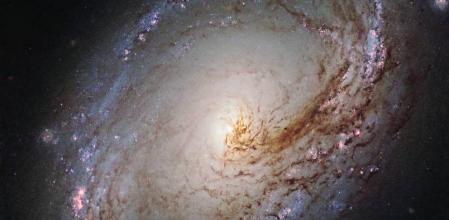Astronomers using NASA’s Hubble Space Telescope have uncovered fascinating insights into the Andromeda Galaxy—our Milky Way’s cosmic neighbor. With over a trillion galaxies in the universe, Andromeda (Messier 31) stands out as one of the most significant for understanding galactic evolution. Visible to the naked eye on a clear autumn night as a faint cigar-shaped object, Andromeda is roughly the same apparent size as our Moon and located 2.5 million light-years away.
A century ago, Edwin Hubble revolutionized astronomy by proving that Andromeda—then considered a “spiral nebula”—was far beyond our Milky Way. This groundbreaking discovery expanded humanity’s understanding of the universe, revealing it to be far larger than previously imagined.
Now, NASA’s Hubble Telescope has completed the most detailed survey ever of Andromeda, providing new clues about its history. As a nearby proxy for spiral galaxies, Andromeda offers astronomers unique insights into the structure and evolution of galaxies, including our own. “With Hubble, we can explore Andromeda in exquisite detail across its entire disk,” said principal investigator Ben Williams from the University of Washington. “You can’t achieve this level of detail with any other galaxy.”
Hubble’s sharp imaging capabilities have resolved over 200 million stars in Andromeda, capturing stars brighter than our Sun that appear as grains of sand spread across a vast cosmic beach. However, this is only a fraction of Andromeda’s total estimated population of 1 trillion stars. Photographing Andromeda was a monumental effort requiring over 1,000 Hubble orbits across more than a decade. The final mosaic—a stunning 2.5-billion-pixel image—was stitched together from 600 individual fields of view.
This ambitious survey began with the Panchromatic Hubble Andromeda Treasury (PHAT) program, which imaged the northern half of the galaxy using near-ultraviolet, visible, and near-infrared wavelengths. The southern half was later mapped by the Panchromatic Hubble Andromeda Southern Treasury (PHAST), recently published in The Astrophysical Journal. Together, these programs covered Andromeda’s entire disk, revealing structural differences and a treasure trove of data about its stars’ ages, metallicity, and masses.
Andromeda’s unique features tell a story of cosmic upheaval. Unlike the Milky Way, which has a relatively stable evolutionary history, Andromeda shows signs of a turbulent past. It’s densely packed with younger stars and features coherent streams of stars—evidence of past mergers with smaller galaxies. One possible culprit is the satellite galaxy Messier 32, thought to be the stripped core of a spiral galaxy that collided with Andromeda. Such interactions may have triggered bursts of star formation, followed by periods of dormancy.
“Andromeda’s a train wreck,” said Daniel Weisz from the University of California, Berkeley. “It looks like it experienced a major event that caused rapid star formation, which then abruptly ceased.” This turbulent history has left Andromeda in a transitional state, resembling a blend between a star-forming spiral galaxy and a more quiescent elliptical galaxy dominated by older, red stars.
Hubble’s findings are paving the way for future observations by NASA’s James Webb Space Telescope and the upcoming Nancy Grace Roman Space Telescope. Roman, which offers a wide-angle view of the universe, will capture vast amounts of data to complement Hubble’s high-resolution observations.
After more than three decades of operation, the Hubble Space Telescope continues to shape our understanding of the cosmos. Managed by NASA in collaboration with the European Space Agency, Hubble’s legacy of discovery is a testament to international scientific cooperation. Its Andromeda survey represents another milestone, revealing the complex and captivating history of one of the universe’s most intriguing galaxies.




